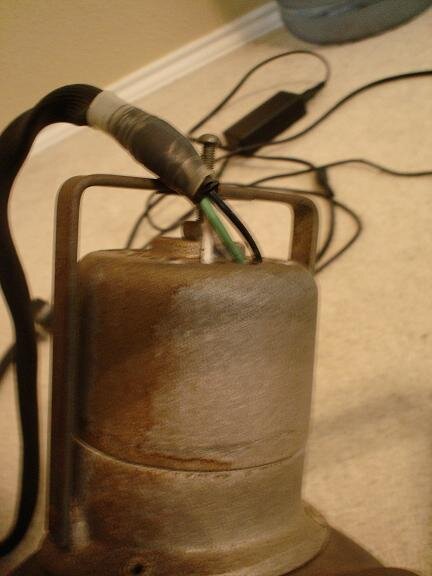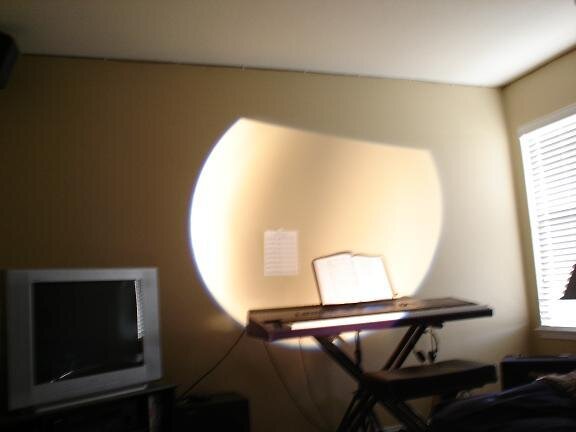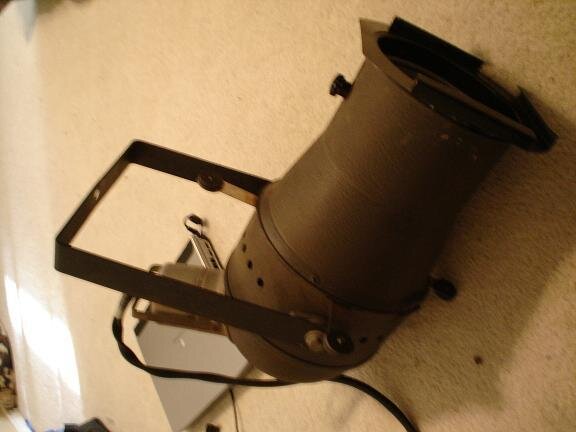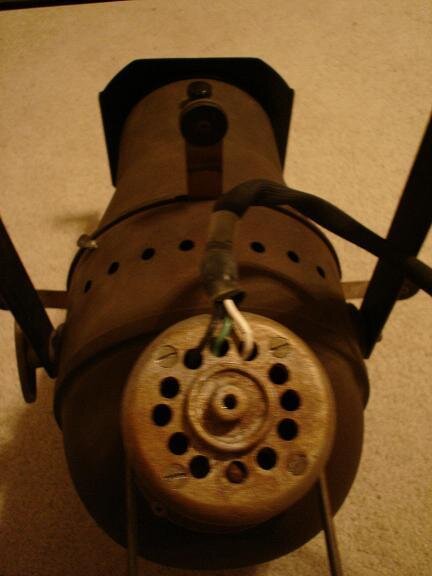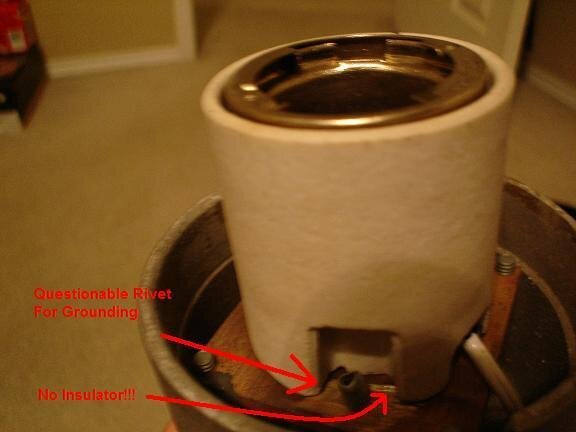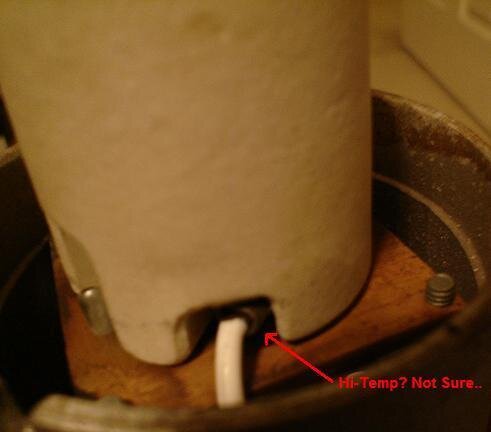Heat shrink would be a bad thing to be entering the
fixture. Consider how
heat shrink functions... shrinks as it gets warm. Get it really warm, it tends to smolder once it is finished shrinking beyond the wall strength thus splitting and falling off if not staying in place and burning.
It’s a practice I follow that, if I sell a piece of gear, I’m liable for it’s
safety... apparently you get what you pay for from this source and it’s as is. Should you
electrocute yourself or burn down the building by way of using this gear, you have a lawsuit you could claim against this retailer thus the concept of only selling safe gear - much less gear that’s up to
NEC specifications. Can’t sell
asbestos gear, also can’t sell the gear as it was sold to you. Still for what you paid for it, what investment you put into it will be well worth the added cost in making it safe.
Friction tape would also tend to be a really bad thing to be entering the
fixture - the rubber and adhesive in it tends to start fires when it gets
Leko warm.
Friction tape is fine near the
plug, keep it away from the
fixture.
(
Gaffers tape in addition to not being
UL listed for electrical wiring, also tends to smolder if not burn thus is also not to be used.)
The only type of tape you can use at the
lamp cap and in a
strain relief is a fiberglass or Teflon high temperature electrical tape such as #23 or #69 Scotch fiberglass electrical tape. Such tape works really well in high temperatures and the ½" stuff is easy to wrap and really good to be using with any
strain relief type so as to protect against sharp edges and prevent bending too tightly near the clamp. Terminate the tape under the
strain relief. Good concept is to start wrapping the conductors with the fiberglass tape, slide the fiberglass sleeving over the taped area without breaking the tape, than do a double layer over the fiberglass sleeving - this should help prevent the fiberglass sleeving from failing out of the
strain relief.
You are required by code to have both a
bushing and
strain relief of the wires entering a lighting
fixture. This be it as it will have been done with the
asbestos - a knot as
strain relief with brass
grommet bushing, or better yet these days given smaller
conductor OD’s, a two screw
strain relief as you would normally find on such fixtures. Weather tight strain reliefs could also be used, except it needs to be a high temperature version using a Silicone
strain relief and not a rubber one. Easier to use a two screw
strain relief, and more normally done on a
Leko of this type.
Properly done, this
lamp cap even if radial style should have a 3/8" NPT two screw
strain relief similar to any modern
360Q lighting
fixture. This as from
Altman is a 3/8" NPT two screw
strain relief and not really something you can get other than from them or perhaps L&E. The 3/8" NPT hole will be smaller and in hole more properly sized for the cable
whip and
lamp cap. It will in general work best. Be very careful of the
Altman two screw
strain relief - it’s these days made in China and the casting is normally really rough and sharp on all edges by way of being much less in quality from what it used to be. A trip
thru a
wire wheel or at least time with a file so as to smooth out the rough edges cast or stamped steel is very necessary all about the
strain relief for all
Altman brand 3/8" NPT strain reliefs. Also some high temperature
thread locker on the screw threads would be useful as the class of fit on the
nut is not very similar to that of the cast threads - in other words, it’s really loose. If at all possible, a internal tooth lock washer for 3/8" NPT would be recommended for use here. Good challenge to get tight enough verses strip the threading. This or break the
strain relief in getting it tight enough. A high temperature
thread locker and if at all possible will allow for a little less tightening and thus a little less chance that you will break the
strain relief in getting it really tight. Buy extra strain reliefs just in case.
The other more normally used but not
fitting the
cord as well solution would be to do a store bought ½" NPT two screw
strain relief sold for use on
Romex type cable - though I could never figure out why a oval shaped cable would benefit from a rounded or D-shape
strain relief. Need a 7/8" dia. Hole for this and a step
bit would be preferred for cutting any holes in this casting. If you go low budget, the local hardware above solution will work fine and be code compliant for this type of wiring. A
bit better quality in such strain reliefs all around, but given your
fixture, I don’t recommend it.
As with the recommendation of taking it slow for the ½"
bit, take it slow with the step
bit - probably around 400rpm on a cordless drill and use cutting oil on the
bit. However, as opposed to the concept of drilling out for ½", that would be a bad idea with a standard
bit unless you both countersunk or filed away the sharp edges and also used a soft metal
grommet or silicone
grommet, than tied a UL knot around the conductors. Not just a question of hole, it’s also a question of surfaces that even if smooth and rounded, are softer or as soft as what is passing
thru. Just drilling for a larger hole is a bad idea short of refining the hole, than still bad unless using grommets.
What brand is this
fixture Kliegl or Major? Very curious
lamp cap both in size and four screw adjustment type. Never seen a four screw
bench focus adjust
lamp cap... Much less it’s depth is strange. Center hole also seems to be missing something - this should be at least in theory the lock-down for the adjustment screw. Or it could be that and a sub-cap
yoke mounting hole. Seems at very least with this center hole, you are missing something here. There should be some threaded screw hole to lock down the focus at very least.
As shown in the later picture, totally against code to do as done - the place that sold you the
fixture didn’t have a clue thus you should be very suspicious of what other “good ideas” they had in wiring the
fixture and it’s condition.
Take the center
ground hole and drill it out for a 3/8" NPT hole - or if necessary for ½" NPT and in either case potentially, you will have to do some rivited sub-plates if too close to the cooling holes you won’t be using. You would have to sandwich your hole between two plates shaped to fit in the
lamp cap so as to provide some support for the
strain relief fitting. Easiest is say two pieces of 16ga steel that are riveted into place with that 7/8" hole in it’s center if using a ½" NPT
fitting. Otherwise best yet and hopefully
fitting within the gap between holes, the 3/8" NPT
strain relief given the proximity of other holes would be recommended. Don’t worry about covering up these three holes... two of them will already have been covered by the
asbestos wiring. Don’t go
thru the side of the
lamp cap to
wire the
fixture... just not done and often very much the wrong place to
wire from by way of how it’s designed.
If you are going to be using the 200c
wire provided (without the added fiberglass over it), I would also recommend sleeving it for a 3" to 6" length with some #12 silicone based fiberglass sleeving (McMaster Carr). This would prevent contact with the
wire to hot and potentially moving screws cutting or melting
thru, and also add a
level of heat resistance that so if the 200c
wire melts, it’s still insulated. Slide the silicone sleeving over your taped
crimp terminals and fiberglass
E-tape the ends of the conductors as they terminate. This is similar in practice to most modern lamp bases - a individual
conductor protection of the
wire as it leaves the lamp
base. Just good
safety.
So, back to being suspicious...
Ground wouldn’t be very important in how it’s wired as to what form of
crimp ring terminal used - wants to be un-insulated of course, and it would probably be good to have some form of lock washer on it. Give a tug to this
wire to ensure it won’t pull loose. This lock washer need no matter if threaded hole in the
lamp cap’s
base mounting plate or thru-bolted - but it must be that the
ground goes to that lamp
base mounting plate.
Ground wire goes to the lamp
base mounting plate - not somewhere to the body of the
fixture.
Given this
fixture had at best better be using a medium
pre-focus lamp
base (P-28s), the high temperature 200c
wire feeding the lamp
base (shown) need to go to ring terminals that are high temperature type. Normal zinc plated ones that are just copper are not sufficient for high temperature needs - such a
ring terminal under a lamp
base needs to be steel/high temperature. You also need a silicone bronze lock washer if you want to have a really good prevention from coming loose. This given it’s not a really old (grey in color) GE brand of lamp
base where the screws to the lamp
base don’t come loose thus you would not be able to add a lock washer.
The
crimp barrel part of your high temperature
crimp terminal would also tend to want to be fiberglass electrical tape insulated. Such lamp bases when not already coming with the whips attached were for these fixtures designed to have a sort of
ferrule/washer combination which are no longer really available - or at least really rare. The design of a Medium
Pre-focus lamp
base was not designed for ring terminals thus the use of fiberglass electrical tape to insulate the
barrel part is necessary due to the mis-shaped hole
pattern to the lamp
base.
Also the lamp
base needs an
insulator pad between lamp
base and the lamp
base mounting plate. This is a must. Not a huge fan of what’s normally available as insulators - better off with a 1/16" thick
ceramic fiber
insulator pad but with such a pad it might become problematic due to moisture resistance. All a question of what’s going to become brittle due to heat verses what has moisture resistance.... some form of under the lamp
base pad at least is necessary so as both insulate against electrical contact and provide some form of cushioning to the lamp
base porcelain. You either want something that’s factory by way of these days looking like a
circuit board type material, or something that looks like
asbestos but has much smaller fibers thus being
ceramic fiber. McMaster Carr item I’m a big fan of...
Anyway, your lamp
base screws need to be brass - no zinc plated steel screws will work as well.
Ensure while you are in there that the screws holding together the lamp
base are tight and that there is no discoloration of the lamp
base, pitting or any other stuff - the lamp
base needs to conduct well, otherwise you are just throwing away money on lamps. In the past has been covered how to re-surface P-28s lamp bases with silicone fiber type Demmel and brass
wire wheels, and further what to look for. Given how these fixtures were wired, a re-read of such sections and what in general to look for on older fixtures would be advisable.
Also, your
bench focus photo looks really bad with that off center elongated dark spot. Should be able to get at least a round dark spot at most or at best a very blue/white full field without any dark spots. Yes, these fixtures would tend to be best in supplementing your inventory so as to free up other fixtures for stuff like
pattern projection. Use them for especially such looks in the amber range - go a little less saturated in the amber range and they will be just fine.
Other details such as not using any zinc plated steel screws about say for mounting the lamp
base, instead the origional brass screw or better yet, stainless steel screws to mount lamp
base to the
base mounting plate. I’m also a big fan of Teflon washers between screw and
porcelain - added
shock resistance and a cushion as it were. High temperature
thread locker is fine to use here, just not on any electrical connections.
Good project, what's the
focal length of the
fixture? Single
lens would mean the next size smaller in size - meaning a 6x12 single
lens is the equivalent of a 6x16 by way of memory of past experience. This seemingly is what you have from looking at it.



